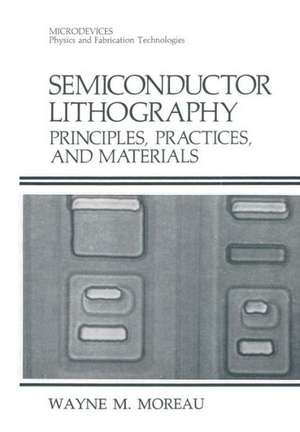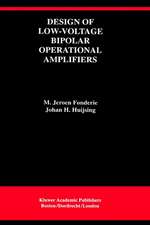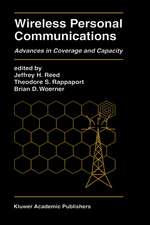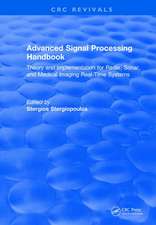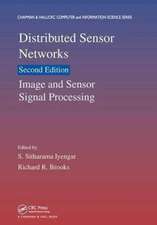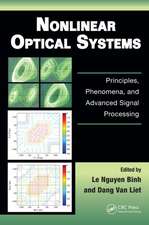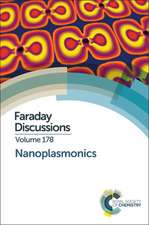Semiconductor Lithography: Principles, Practices, and Materials: Microdevices
Autor Wayne M. Moreauen Limba Engleză Paperback – 22 feb 2012
Din seria Microdevices
- 18%
 Preț: 951.91 lei
Preț: 951.91 lei - 18%
 Preț: 953.35 lei
Preț: 953.35 lei - 18%
 Preț: 1250.88 lei
Preț: 1250.88 lei - 18%
 Preț: 958.38 lei
Preț: 958.38 lei - 18%
 Preț: 1395.94 lei
Preț: 1395.94 lei - 20%
 Preț: 572.40 lei
Preț: 572.40 lei - 18%
 Preț: 1242.21 lei
Preț: 1242.21 lei - 18%
 Preț: 1240.30 lei
Preț: 1240.30 lei - 18%
 Preț: 966.15 lei
Preț: 966.15 lei - 18%
 Preț: 955.08 lei
Preț: 955.08 lei -
 Preț: 401.24 lei
Preț: 401.24 lei - 15%
 Preț: 639.41 lei
Preț: 639.41 lei - 15%
 Preț: 651.67 lei
Preț: 651.67 lei - 18%
 Preț: 1123.98 lei
Preț: 1123.98 lei -
 Preț: 395.25 lei
Preț: 395.25 lei - 18%
 Preț: 966.59 lei
Preț: 966.59 lei - 18%
 Preț: 954.93 lei
Preț: 954.93 lei
Preț: 981.58 lei
Preț vechi: 1197.05 lei
-18% Nou
Puncte Express: 1472
Preț estimativ în valută:
187.85€ • 203.98$ • 157.79£
187.85€ • 203.98$ • 157.79£
Carte tipărită la comandă
Livrare economică 22 aprilie-06 mai
Preluare comenzi: 021 569.72.76
Specificații
ISBN-13: 9781461282280
ISBN-10: 1461282284
Pagini: 952
Ilustrații: 952 p.
Dimensiuni: 170 x 244 x 50 mm
Greutate: 1.48 kg
Ediția:Softcover reprint of the original 1st ed. 1988
Editura: Springer Us
Colecția Springer
Seria Microdevices
Locul publicării:New York, NY, United States
ISBN-10: 1461282284
Pagini: 952
Ilustrații: 952 p.
Dimensiuni: 170 x 244 x 50 mm
Greutate: 1.48 kg
Ediția:Softcover reprint of the original 1st ed. 1988
Editura: Springer Us
Colecția Springer
Seria Microdevices
Locul publicării:New York, NY, United States
Public țintă
ResearchCuprins
1. Introduction.- 1-1. Semiconductor Device Manufacturing.- 1-2. Lithography Processing and Materials.- 1-3. Lithography Costs and Process Equipment.- 1-4. Organization of the Book.- 2. Positive Photoresists.- 2-1. Introduction.- 2-2. Diazoquinone Photoresists.- 2-2-1. General Performance.- 2-2-2. General Photochemistry and Solubility Properties.- 2-2-3. Spectral Absorbance.- 2-2-4. Resins for DQ Resists.- 2-2-5. Chemical Mechanisms in DQN.- 2-3. Shelf Life and Quality Control of DQN.- 2-4. Summary and Outlook on DQN Resists.- 2-5. Deep-UV Exposure.- 2-5-1. Optical Systems.- 2-5-2. Resist Sensitometry.- 2-5-3. Deep-UV Resists.- 2-6. PMMA and PMIPK.- 2-6-1. PMMA.- 2-6-2. PMIPK.- 2-6-3. Summary.- 2-7. Nitroaldehyde Resists.- 2-8. Photocatalyzed Positive Resists.- 2-9. Miscellaneous Positive Deep-UV Resists.- 2-10. Outlook.- 3. Positive Radiation Resists.- 3-1. Introduction.- 3-1-1. Tool Contributions.- 3-1-2. Resist Considerations.- 3-1-3. High-Energy Radiation Absorption.- 3-1-4. Radiation Chemical Reactions.- 3-2. X-Ray Positive Resists.- 3-2-1. Basic Exposure Tool.- 3-2-2. X-Ray Positive Resists.- 3-3. Positive Ion-Beam Resists.- 3-4. Electron-Beam Positive Resists.- 3-4-1. Electron-Beam Tool and Process Considerations.- 3-4-2. One-Component Positive Radiation Resists.- 3-4-3. Pre-cross-linked PMMA Resist.- 3-4-3-1. Plasma Stability of PMMA.- 3-4-3-2. Processing.- 3-4-3-3. Outlook for PMMA.- 3-5. Polyolefin Sulfones and Other Electron-Beam Positive Resists.- 3-6. Practical Positive Resists.- 3-7. Outlook.- 4. Negative Photoresists.- 4-1. Introduction.- 4-1-1. Chemical Reactions.- 4-1-2. Exposure and Contrast.- 4-1-3. Photosensitizers.- 4-1-4. Commercial Resist Compositions.- 4-2. Polyvinylcinnamate.- 4-3. Azide-Sensitized Resists.- 4-3-1. Azide-Activated Formulations.-4-3-2. Photochemistry of Azides.- 4-3-3. Rubber and Phenolic Based Systems.- 4-3-4. Photospeed of Rubber Azide.- 4-3-5. Oxygen Effect in Azide Resists.- 4-4. Miscellaneous Radical-Based Photoresists.- 4-5. High-Temperature Negative Photoresists.- 4-6. Photopolymerization.- 4-7. Charge Transfer Resists.- 4-8. Inorganic Resists.- 4-9. Summary and Outlook.- 5. Negative Radiation Resists.- 5-1. Introduction.- 5-2. X-Ray Resists.- 5-3. Ion-Beam Resists.- 5-4. Electron-Beam Resists.- 5-4-1. Styrene-Based Resists.- 5-4-2. Epoxy-Based Resists.- 5-4-3. Allyl-Based Resists.- 5-4-4. Charge Transfer Resists.- 5-4-5. Silicone Negative Resists.- 5-4-6. Miscellaneous Resists.- 5-5. Two-Component Resists.- 5-6. Practical Use of Negative Electron-Beam Resists.- 5-7. Outlook.- 6. Surface Preparation and Coatin.- 6-1. Introduction.- 6-2. Cleaning the Wafer Surface.- 6-2-1. Contamination and General Consequences.- 6-2-2. Causes and Mechanisms of Surface Contamination.- 6-2-3. Removal of Contaminants.- 6-2-3-1. Clean Rooms.- 6-2-3-2. Liquid Contamination.- 6-2-3-3. Removal of Contaminants on the Wafer Surface.- 6-2-4. Detection of Contaminants on the Wafer Surface.- 6-3. Storage of Cleaned Wafers.- 6-4. Adhesion Promoters.- 6-5. Physical Chemistry of Spin Coating.- 6-5-1. Solvents for Spin Coating.- 6-5-2. Practical Aspects of Spin Coating.- 6-6. Other Resist Coating Techniques.- 6-6-1. Langmuir-Blodgett Films.- 6-6-2. Gas-Phase Deposition.- 6-7. Resist Film Thickness Measurements.- 6-8. Pinholes in Resist Films.- 6-8-1. Causes of Pinholes.- 6-8-2. Measurement of Pinholes in Resist Films.- 6-8-3. Reduction and Control of Pinholes in Resist Films.- 6-9. Summary and Outlook of Resist Coatings.- 7. Prebake (Softbake).- 7-1. Introduction.- 7-2. Kinetics of Prebaking.- 7-3. Physical Changes inPrebaking.- 7-3-1. Residual Stress Strain.- 7-3-2. Measurement of Residual Solvent in Prebaked Films.- 7-4. Prebaking Positive Resists.- 7-5. Prebake Equipment and Processes.- 7-6. Summary.- 8. Optical Exposure.- 8-1. Introduction.- 8-2. Optical Principles.- 8-3. Contact and Proximity Print.- 8-4. Projection Print.- 8-5. Overlay.- 8-6. Miscellaneous Exposure Techniques.- 8-7. Photomasks.- 8-8. Sensitometry.- 8-9. Outlook.- 9. Radiation Exposure.- 9-1. Introduction.- 9-2. Electron-Beam Performance.- 9-3. Electron-Beam Exposure Equipment.- 9-4. Electron-Beam-Resist Interaction.- 9-4-1. Charging of Resist.- 9-4-2. Resist Outgassing.- 9-5. Registration.- 9-6. Proximity Effects.- 9-7. Radiation Damage.- 9-8. X-Ray and Ion-Beam Exposure.- 9-8-1. X Rays.- 9-8-2. Ion Beams.- 9-9. Outlook.- 10. Developing Resist Images.- 10-1. Introduction.- 10-2. General Mechanisms.- 10-3. PMMA Developer Sensitivity.- 10-4. Enhancement of R and R0 of PMMA.- 10-5. Diazoquinone-Novolak Resists.- 10-5-1. Introduction.- 10-5-2. Modeling DQN Development.- 10-5-2-1. Photokinetics of Exposure.- 10-5-2-2. Kinetics of Dissolution.- 10-6. Development of Negative Resists.- 10-7. Dry Development.- 10-7-1. Direct Image Formation.- 10-7-2. Plasma-Developed Resists.- 10-7-2-1. Monomer Matrices for Plasma-Developable Resists.- 10-7-2-2. Polymer Matrices for Plasma Development.- 10-7-3. Plasma Etching without Development.- 10-7-4. Outlook for Dry Development.- 10-8. Practical Development of Resists.- 11. Postbake.- 11-1. Introduction.- 11-2. Physical Chemistry of Postbake.- 11-2-1. Adhesion.- 11-2-2. Melting.- 11-3. Chemical Reactions in Postbake.- 11-4. Other Methods of Hardening DQN.- 11-5. Practical Postbaking.- 11-6. Summary and Outlook.- 12. Additive Processes.- 12-1. Introduction.- 12-2. Single-Layer Resist for Resist Processes.- 12-3. DQN for Lift-off.- 12-4. Lift-off with PMMA Films.- 12-5. Single-Film Lift-off with Shallow-Profile Resists.- 12-6. Summary and Outlook of Single Films.- 12-7. Double-Layer Resist.- 12-7-1. Developer Transfer Bilayer Resist.- 12-7-2. Optical Dual-Layer Resist.- 12-7-3. Dual-Layer Plasma Etch Transfer.- 12-8. High-Temperature Lift-off.- 12-9. Summary and Outlook of Double-Layer Resists.- 12-10. Trilayer Resists.- 12-10-1. Planarizing Layers.- 12-10-2. Barrier Layers.- 12-10-3. Image Layer.- 12-11. Practical MLR Processing.- 12-12. Metal Deposition and Lift-off.- 12-12-1. Resist Profile and Lift-off.- 12-12-2. Resist Thickness and Lift-off.- 12-13. Lift-ofT Process Control.- 12-14. Miscellaneous Additive Processes.- 12-15. Electroplating with Resists.- 12-16. Ion Implantation Resist Masking.- 13. Subtractive Etching.- 13-1. Introduction.- 13-1-1. General Principles of the Rate of Etching.- 13-1-2. Phenomenological Mechanisms of Etching.- 13-2. Liquid Etching.- 13-2-1. SiO2 Liquid Etching.- 13-2-2. Wetting, Adhesion, and Undercutting.- 13-2-3. Surface Primers and Treatments.- 13-2-4. Stress in Resist Films.- 13-3. Passivity in Etching SiO2.- 13-4. Silicon Etching.- 13-5. Sandwich Etching.- 13-6. Aluminum Etching.- 13-6-1. Etchants for Aluminum.- 13-6-2. Electroetching.- 13-6-3. Summary.- 13-7. Practical Aspects of Wet Etching.- 13-8. Troubleshooting Etching.- 13-8-1. Spray versus Static Etching.- 13-8-2. Other Etching Considerations.- 13-9. Modeling of Wet Etching.- 13-10. Outlook of Wet Etching.- 13-11. Introduction to Gas Etching.- 13-12. Aluminum Etching.- 13-12-1. Introduction.- 13-12-2. Mechanism of A1 Etching.- 13-12-3. Selectivity of A1 Etching.- 13-12-4. Residue and Postetch Corrosion.- 13-12-5. Resist Hardening.- 13-12-6. PracticalA1 Etching.- 13-12-7. Summary.- 13-13. Silicon Etching.- 13-13-1. Introduction.- 13-13-2. Gas-Phase Etching.- 13-13-2-1. Thermal Gas-Phase Etching.- 13-13-2-2. Plasma Etching.- 13-13-2-3. Plasma Etch Rates of Radical Systems.- 13-13-2-4. Plasma Ion Etching.- 13-13-2-5. Role of Plasma-Deposited Polymers.- 13-13-2-6. Gas-Phase Recombination Model.- 13-13-2-7. Role of Electrode in Etching.- 13-13-2-8. Summary of Plasma Etching Mechanisms.- 13-13-3. Selectivity.- 13-13-4. Etch Profiles and Image Bias.- 13-13-4-1. Etch Profile Factors.- 13-13-4-2. Ion Transport Model.- 13-13-5. Uniformity of Plasma Etching.- 13-13-6. Plasma Etching Contamination.- 13-13-6-1. Sputtered Metals.- 13-13-6-2. Insulation Deposits.- 13-13-6-3. Etch Residues.- 13-13-6-4. Radiation Damage.- 13-13-7. Applications of Plasma Processing.- 13-13-8. Loading Effects.- 13-13-9. Etch Rate and Endpoint Monitor.- 13-14. Summary and Outlook of Etching.- 14. Stripping of Resists.- 14-1. Introduction.- 14-2. Liquid Stripping Formulations.- 14-2-1. Organic Solvent Strippers.- 14-2-1-1. Simple Solvent Strippers.- 14-2-1-2. Multiple Component Strippers.- 14-2-1-3. Surface Wetting Agents.- 14-2-2. Typical Liquid Strippers.- 14-3. Water-Based Strippers.- 14-3-1. Acidic Strippers.- 14-3-2. Alkaline Strippers.- 14-4. Practical Aspects of Stripping.- 14-5. Plasma Gas Stripping of Resists.- 14-5-1. Reactants of Plasma Stripping.- 14-5-2. Polymeric Reactants.- 14-5-3. Oxygen Plasma.- 14-5-4. Plasma Radiation Field.- 14-6. Kinetics of Stripping.- 14-6-1. Gas-Solid Interactions.- 14-6-2. Activation Energy of Stripping.- 14-6-3. Monitoring Plasma Stripping.- 14-6-4. Resist Stripping Rates and Polymer Structure.- 14-7. Side Effects of Plasma Stripping.- 14-7-1. Detection of Damage.- 14-7-2. Prevention and Control of Damage.- 14-8. Plasma Stripping Apparatus.- 14-9. Miscellaneous Stripping Techniques.- 14-10. Applications of Oxygen Plasma to Semiconductor Lithography.- 14-11. Outlook.- 15. Process Controls.- 15-1. General Process Considerations.- 15-2. Lithographic Process Automation.- 15-3. Resist Material Controls.- 15-4. Resist Processing Controls.- 15-4-1. Exposure Controls.- 15-4-2. Development Process Controls.- 15-4-3. Etching Process Controls.- 15-5. Process Troubleshooting.- 15-6. Summary.- 16. Nonresist Processe.- 16-1. Introduction.- 16-1-1. Elementary Considerations.- 16-1-2. Chemical and Thermal Energy Requirements.- 16-1-3. Laser Sources.- 16-2. Gas-Solid Photon-Induced Reactions.- 16-2-1. Deposition.- 16-2-2. Subtractive Etching and Removal.- 16-2-3. Summary of Gas-Solid Reactions.- 16-3. Liquid-Solid Reactions.- 16-3-1. Deposition Including Oxidation.- 16-3-2. Etching at Liquid-Solid Interface.- 16-4. Solid-Solid Reactions.- 16-4-1. Sublimography.- 16-4-2. Fill-and-Fire Resists.- 16-4-3. Metal Silicides.- 16-4-4. Metal Salt Decomposition.- 16-4-5. Generation of Etchants from Solid Precursors.- 16-5. Direct Laser Treatments.- 16-6. Summary of Photoassisted Processes.- 16-7. Electron-Beam-Assisted Patterning.- 16-7-1. Deposition by Electron Beams.- 16-7-2. Electron-Beam-Induced Etching.- 16-8. Ion-Beam Processes.- 16-9. Summary and Outlook of Resistless Direct Patterning Lithography.- 17. Summary and Future Processes.- 17-1. Critical Lithography.- 17-2. Resist Materials.- 17-2-1. Positive Photoresists.- 17-2-2. Negative Photoresists.- 17-2-3. Positive Radiation Resists.- 17-2-4. Negative Radiation Resists.- 17-2-5. Complementary Lithographic Materials.- 17-2-6. Overall Rating of Resists.- 17-3. Process Lithography.- 17-3-1. Coating Techniques.- 17-3-2. Prebake and Postbake.- 17-3-3. Expose.- 17-3-4. Develop.- 17-3-5. Subtractive Processing.- 17-3-6. Additive Processes.- 17-3-7. Stripping of Resists.- 17-3-8. Resistless Processes.- 17-3-9. Process Controls.- 17-4. Postlude.
